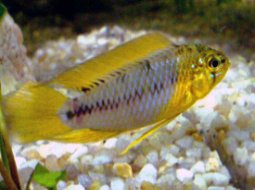
Loading Aqualapp ...
Care and Compatibility of Celestial eye goldfish - Carassius auratus V
Introduction
The Celestial Eye fish, also known as Celestial or Telescope Goldfish, is a variety of Goldfish characterized by its prominent eyes directed upwards. Its body is rounded, and its coloration can vary, ranging from red, white, orange, black, or a combination of these colors. They are highly appreciated in the aquarium hobby due to their unique and striking appearance.
Behavior
Celestial Eye fish are calm and peaceful fish that adapt well to community aquariums. However, due to their prominent eyes, they may have difficulty competing for food with more agile fish. It is recommended to provide them with suitable food and ensure they can access it without difficulty. They are omnivorous and accept a variety of foods, such as flakes, pellets, live, and frozen foods. Regarding reproduction, Celestial Eye fish can be bred in captivity, although successful breeding requires special care. During the breeding process, it is important to provide them with a suitable environment with floating plants or structures where they can deposit their eggs.
Sexual Dimorphism
Sexual dimorphism in Celestial Eye Goldfish is minimal and difficult to distinguish. Both males and females have a similar appearance. However, during the breeding season, males may exhibit more active courtship behaviors.
Reproduction
The reproduction of Celestial Eye fish can be challenging, but it is possible to breed them in captivity. During the breeding process, a suitable environment with floating plants or structures where they can deposit their eggs is required. The female can lay hundreds of eggs, which will be fertilized by the male. After spawning, it is recommended to remove the parents from the breeding tank, as they may eat the eggs. The eggs will hatch in approximately one week, and the fry will require special care, such as proper feeding and a clean and safe environment, for their growth and development.
Aquarium Conditions
The Celestial Eye Goldfish is a variety of Goldfish known for its prominent eyes that point upwards. It requires a spacious aquarium with good filtration and low flow. Decoration should be soft to prevent injuries to its delicate eyes. It's important to provide them with free swimming space and avoid tank mates that may nip at their eyes.
Feeding
Celestial Eye fish are omnivorous and accept a variety of foods. They can be fed with high-quality flakes or pellets that contain a balanced mixture of proteins, fats, and carbohydrates. They also enjoy live or frozen foods such as daphnia, brine shrimp, and bloodworms. Offering them a varied diet is recommended to ensure their proper nutrition and prevent health issues.
Complexity
Caring for Celestial Eye Goldfish is moderately easy. They are hardy fish that can adapt to a variety of water conditions. They are omnivores and accept a variety of foods, but may be prone to health issues like dropsy due to their special body shape. They require a balanced diet and regular aquarium maintenance.
In case you need more help, or if you want to know into any topic related to the Carassius auratus V (Celestial eye goldfish) and even any other species you can use the forums to ask what you need.
To do an analysis more detailed about coexistence and behavior of Carassius auratus V (Celestial eye goldfish) use the Aquarium simulation tool, if you do this you can test different ways to combine the Celestial eye goldfish with other fishes giving the dimensions and space on you aquarium, on this way you can known the optimal configuration for keep the fishes that you want.
You can also find out the 90 species compatible with the Carassius auratus V (Celestial eye goldfish) can live together.
Note: The parameters of the water such as PH and temperature are also used to calculate the compatibility of the species.
Compatible species (90)
Compatible (27 Species)
Compatible without any restriction
Similar Sizes (12 Species)
They can coexist if they are the same size or very similar sizes, it does not work in all cases, there may be exceptions.
With Reservation (5 Species)
Compatible in some cases, it depends on the nature and personality of the fish.
Considerable size difference (21 Species)
They can coexist while they are similar in size or the size difference is not very abysmal, since as the fish grows it increases the chances of eating its partner that did not grow much.
Food competition (22 Species)
They can live together but you have to be careful since it is likely that the fastest fish will take all the food and leave nothing for their partners who are slow swimmers, so you have to make sure that everyone can eat.
Compatible if space is enough (3 Species)
They can coexist together if the aquarium they share is large and spacious enough for both species to feel good, as some fish may attack others to feel that they have little space and try to eliminate the competition.
Celestial eye goldfish
Carassius auratus V
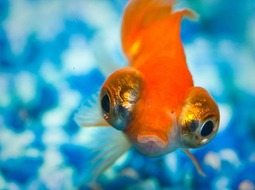
- Ph: 7 - 7.5
- Temperature (c°): 17 - 24
- Measures: 10 cm - 15cm
- Aquarium Capacity:
23 Liters - 6 Gallons - Comportamiento: Peaceful
- Morfología: Bright colors, Delicate
- Tamaño: Medium
- Tipo de Agua: African, Sweet water
- Velocidad de nado o movimiento: Slow
- Zona de Nado: Swim in the middle of the aquarium



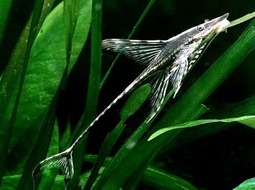

.jpg)



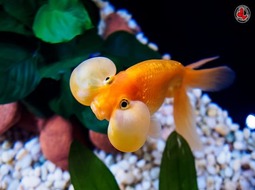
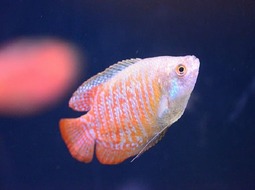

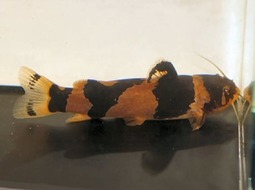
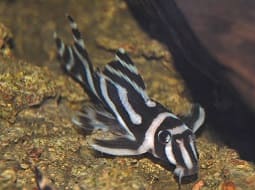

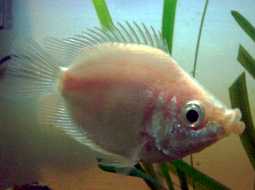
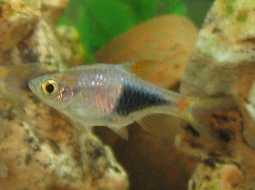

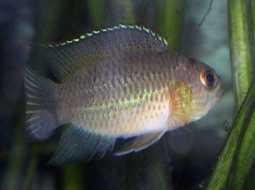

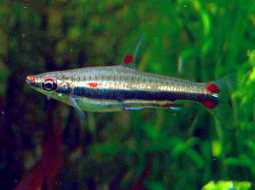


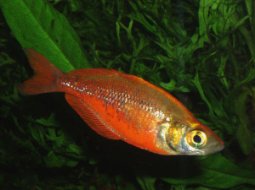
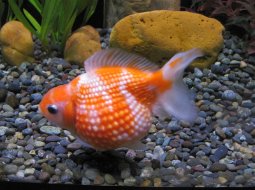

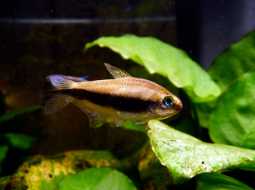
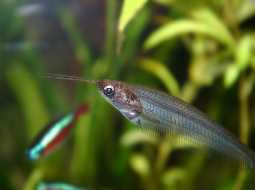
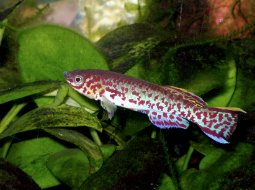





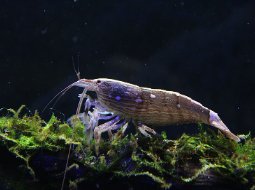

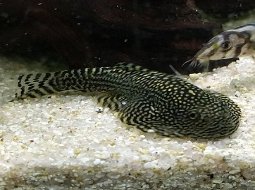



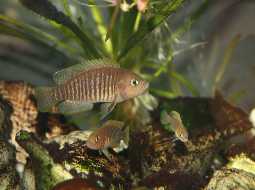



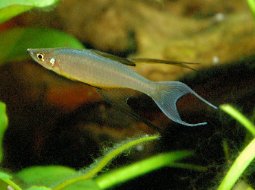



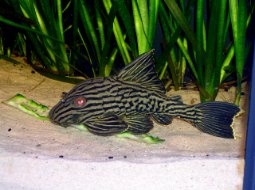
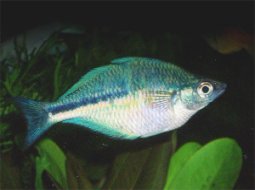

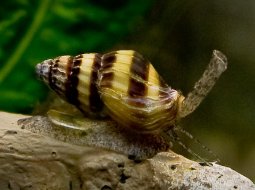



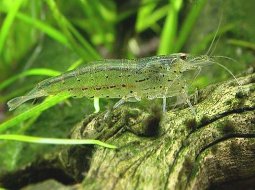
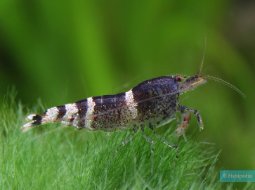



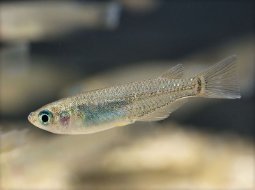


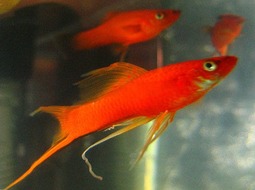
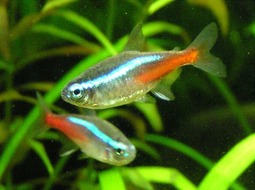

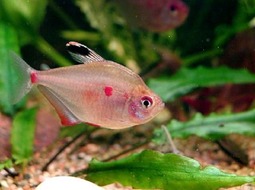



.jpg)


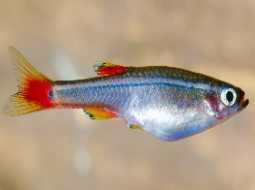

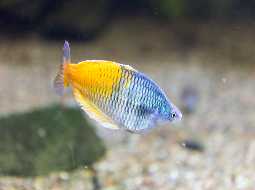
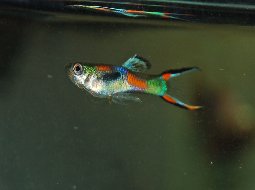

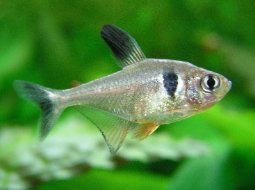
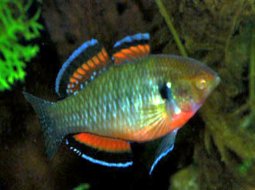
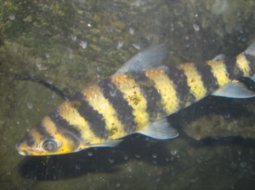



.jpg)
